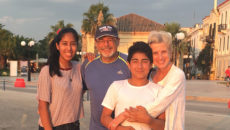Race: Race is a social construct with real effects. For example, biologists today understand that the biological differences between people within a given racialized group are as great as those between members of different racialized groups, however, due to the racist structures of our society, there are health issues specific to particular racialized groups. “Race” as a concept was originally applied to people of different classes in Europe and used to justify disparities between the rich and the poor. At various times, there have been many different constructions of the racial hierarchy of humanity. Racial hierarchies are not neutral; they are racist, placing some groups at the top and others at the bottom. Race is heavily associated with the idea of fixed biological features.
In gross terms, the five racialized groups currently recognized in the U.S. are European American, Asian American, Latino, Native/American Indian, and African American. Each of these terms was constructed over time (for example, “Asian American” did not exist until 1968, and the term arose as a self-determined rejection of “Oriental”), and we have used the currently accepted, self-determined terms.
Ethnicity: Ethnicity is often used interchangeably with culture and tradition, such that “to be Chinese” is thought to mean one speaks a Chinese language, eats Chinese food, interacts with others according to Chinese ways of behaving. But what does this mean? Which dialect of Chinese must one speakand how proficiently? What kind of Chinese food must one eatand how often? What does it mean to behave like a Chinese person? In contrast to the broader racialized groups mentioned above, ethnic groups are much more tightly defined, and may or may not correspond to national borders. Thus, Chinese people are Chinese regardless of where in the world they might be from, and there are groups living in China who do not consider themselves to be ethnically Chinese. The racialized group “Asian” consists of many different ethnicities. One parent who was a third generation Chinese American told one of the authors that she felt that she and her Chinese adopted daughter had vastly different ethnic identities and cultural heritages.
[Talking About Race and Racism]
Culture: Culture is the collection of practices of music, language, religion, food choices and customs, and so on that connect people to one another. Culture can be learned, and cultural traditions are always changing.
Heritage: Heritage is culture and ethnicity communicated in varying degrees. Transracially adopted children may have access to multiple heritagesthose of their adoptive families, as well as those of their birth families.
Nationality: Nationality refers to citizenship. During the development of the nation-states in the 19th century, nationality was often racialized. But people of any ethnic heritage may be citizens of the United States, and, thus, have a nationality of “U.S.” or, more colloquially, “American.”
Identity: Identity is related to race, ethnicity, culture, and nationality. Just as each of these can and do change over time, so does identity. In the U.S., we tend to think of identity as a card we hold, like a label, that describes only our own self. Another way to think about identity is to consider with whom else do I identify? This may involve both a conscious, self-determined choice, as well as a recognition that we only partially own our identitiesat least some of our identity is determined by how others see us. For example, a transracial adoptee of mixed African American and European American heritage may choose to identify primarily with the African American community, yet fully embrace and honor his ethnic heritages that include those of his adoptive family.



